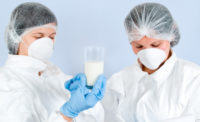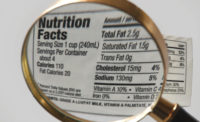The easiest way to prevent recalls associated with refrigerated foods is to ensure you are continually producing safe, wholesome product that never needs to be recalled. Sounds easy, right? And yet, we continue to see recalls occur. In order to really understand how to prevent recalls, we need to delve into why they occur in the first place.
The idea of prevention is paramount to the U.S. Food and Drug Administration’s Food Safety Modernization Act (FSMA). It’s clear that FDA expects that once a processor discovers that something has “gone wrong,” they go back and figure out exactly what happened so that they can put measures in place to prevent it from happening again. For USDA-regulated products, the HACCP approach employs a similar process. Prevention is key, and if your monitoring measures miss an issue that could compromise food safety, you need to go back and determine the root cause of the problem.
A food manufacturer generally needs to recall a food item for one of two main reasons—either they realize internally that a problem exists with a product they’re producing, or they are notified by someone else that there is a problem with an ingredient in one of their products.
When a problem occurs during production, the issue causing the recall is presumably under the control of the facility. In cold food plants, a variety of processes can be in place; if intended to serve as a preventive control (such as a HACCP Critical Control Point), validated critical limits need to be established and monitored. For example, cleaning and sanitation—both of the facilities and the hygiene of workers who might be handling product—are critically important preventative controls to reduce the likelihood your product may need to eventually be recalled. Yet you may be asking, “what should I focus on controlling?” Pathogens and allergens are the main reasons for recalls in recent years—whether introduced by you or your ingredient suppliers—and are your best bet to focus on.
In the proposed preventive control rule, FDA clearly identifies Listeria monocytogenes as an environmental pathogen that thrives in the cold, wet environment of many cold food facilities. Processors need to be particularly mindful of opportunities for post-process contamination, and in addition to cleaning and sanitation, need to control the opportunities for cross contact between raw and processed product, which might include the use of common equipment, forklifts, traffic flow, etc.
Another major cause of recalls in food products across the board relates to allergens. Ideally, a facility would limit their use of allergens, use designated lines for allergens and have labeling certification checks in place. But, cross contact, changes in formulation and application of incorrect labels can still result in allergen-associated recalls. When a facility cannot avoid the use of allergens and must run allergens and non-allergens on the same line, they must take measures to reduce risk, such as running the allergen-containing product last, just before cleanup.
Controlling ingredients as they enter the plant
A cold food processor can do a lot to control risks under its own roof, such as updating and documenting food safety controls, food safety plans and/or HACCP plans. But how do you avoid recalls associated with ingredients, or with temperature abuse after the product leaves your facility? Although FMSA stated that supplier verification was a type of preventive control, FDA does not require it.
Regulation or not, knowing where your ingredients come from and being assured of their safety is critical to protecting your brand and company from the financial and reputational damage caused by a recall. While no single verification tool is fool-proof, there are many ways to make sure your supplier doesn’t compromise food safety practices under your direct control.
For example, second- and third-party audits are heavily used but are no guarantee of being anything more than a “snapshot” in time. Certificates of Analysis and Letters of Guaranty are also good to have, but again, cannot be relied upon exclusively since at the end of the day, they are only pieces of paper.
Looking forward in the supply chain, maintaining the cold chain is necessary for many products produced in cold food plants. Even if you and your suppliers are careful and practice decent food safety measures, do you have visibility of who else is handling your product? If temperature abuse by someone else necessitates a recall, it’s still associated with your brand, even if you weren’t the direct party at fault.
Acknowledging that most companies have limited resources, you should focus your efforts on the suppliers (or customers) and products that are of greatest concern—putting the combination of “high-risk product” and “high-risk supplier/customer” at the top of the list. This risk ranking and resource allocation structure will help processors focus their time and money—both of which are becoming more scarce in today’s market—on the highest risks to its consumers and brand.
Many food manufacturers probably already have these practices in place. But, one bad apple can spoil the bunch, and a major recall in your food category—even if it isn’t your company’s product—can have a negative impact on you. As we look at what caused some of the major recalls (and outbreaks), there are enough instances where people didn’t know or didn’t care. As an industry, we must continue to raise the bar, while at the same time, extending a hand and raising awareness, so that the companies who are not “best in class” don’t pull you down.





